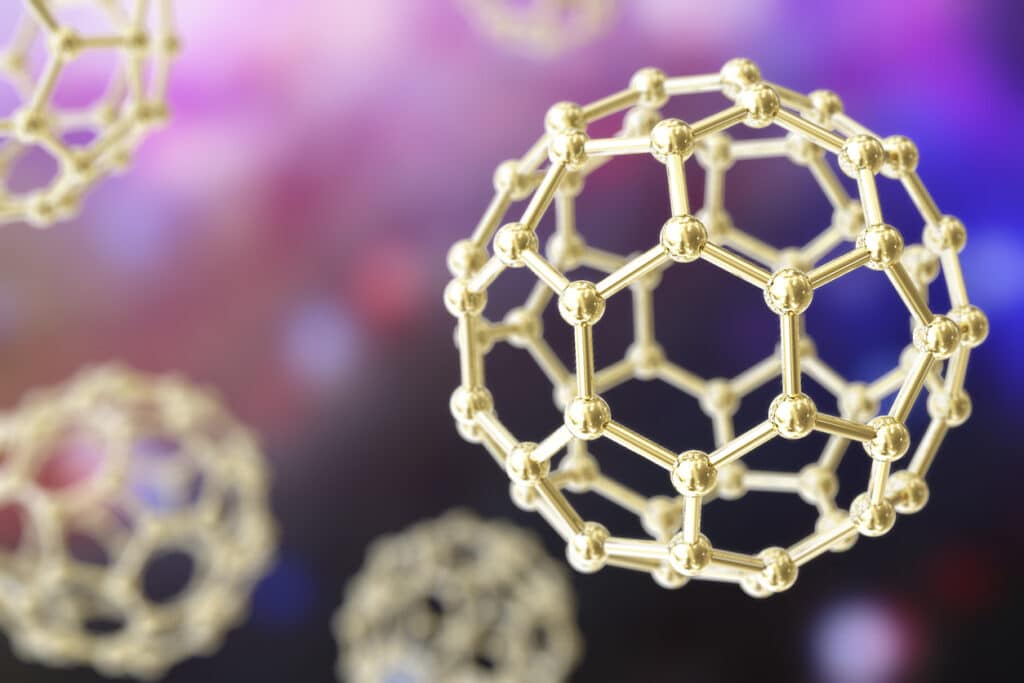Evaluation of transfection efficacy, biodistribution, and toxicity of branched amphiphilic peptide capsules (BAPCs) associated with mRNA
Abstract: Nanoparticles (NPs) have been shown to be a suitable mRNA delivery platform by conferring protection against ribonucleases and facilitating cellular uptake. Several NPs have succeeded in delivering mRNA intranasally, intratracheally, and intramuscularly in preclinical settings.
Continue ReadingA Study of the Cellular Uptake of Magnetic Branched Amphiphilic Peptide Capsule
Abstract: Understanding cellular uptake mechanisms of nanoparticles with therapeutic potential has become critical in the field of drug delivery. Elucidation of cellular entry routes can aid in the dissection of the complex intracellular trafficking and potentially...
Continue ReadingPeptiplexes – A Review of Therapeutic Applications. In “Nucleic Acid Nanotheranostics: Biomedical Applications
Abstract: This chapter will discuss cationic polymers containing ɛ-amine groups and immine or amide linkages that are being used as nanocarriers for nonviral gene delivery. We will focus particularly on cationic peptides. Cationic peptides, free or complexed...
Continue ReadingBAPC-assisted-CRISPR-Cas9 Delivery into Adult Psyllid Ovaries and Pupae for Heritable Gene Editing (Hemiptera)
Abstract: A new method BAPC-assisted-CRISPR-Delivery System, improved heritable gene editing when injecting adults or nymphs of insects [Hemiptera]. Addition of Branched Amphiphilic Peptide Capsules, BAPCtofect™ (Phoreus™ Biotechnology, Inc.,) improved delivery of CRISPR components for heritable gene...
Continue ReadingDevelopment of Novel Chimeric Vaccine and Delivery System for Classical Swine Fever Virus
Abstract: To eliminate the need for a cold chain, DNA vaccine approach was used, in which nanoparticles composed of branched amphiphilic peptide capsules (BAPC) were employed as the DNA delivery agent. The candidate vaccine and the...
Continue ReadingGermline Mutagenesis of Nasonia Vitripennis Through Ovarian Delivery of CRISPR-Cas9 Ribonucleoprotein
Abstract: CRISPR/Cas9 gene editing is a powerful technology to study the genetics of rising model organisms, such as the jewel wasp Nasonia vitripennis. However, current methods involving embryonic microinjection of CRISPR reagents are challenging. Delivery of Cas9...
Continue ReadingBiodegradable Drug-Delivery Peptide Nanocapsules
Abstract: Branched amphiphilic peptide capsules (BAPCs) are an efficient transport system that can deliver nucleic acids, small proteins, and solutes. The ability of BAPCs to break down is essential to their adoption as a delivery vehicle...
Continue ReadingBranched Amphiphilic Peptide Capsule Uptake by Aspergillus Nidulans
Abstract: The ability of branched amphipathic peptide capsules (BAPC) to encapsulate and transport payloads into cells offers new approaches to deliver active ingredients (AIs). Until now, we have found that the BAPC were completely inert in...
Continue ReadingTransdermal Delivery of Branched Amphipathic Peptide Capsule Magnetic (BAPC-MB) in Mice
Abstract: To test the transdermal delivery capabilities of BAPC-MB, the tails of live mice were dipped in BAPC-MB solution for 1, 5, 15 and 30 minutes. After a 24-hour incubation period, the tissues were harvested for...
Continue ReadingRat Intestinal Epithelial Cells (IEC-18) Internalize Magnetic Nanobeads (MNBs) Encapsulated Within a Branched Amphipathic Peptide (BAP) Bilayer
Abstract: To evaluate the effect of BAP encapsulation of magnetic nanobeads on both cellular uptake and cell viability, research was conducted with Branched Amphipathic Peptide Capsule Magnetic Beads (BAPC-MB) and rat intestinal epithelial cells (IEC-18). The...
Continue ReadingThe Blog
FAQs
BAPC®️
What are Branched Amphipathic Peptide Capsules (BAPC®️)?
BAPC®️ are nanospheres made from two branched peptides that self-assemble to form solvent-filled, bilayer defined capsules. They serve as nano-delivery vehicles that overcome many of the poor absorption issues that plague certain classes of drugs: vaccines, therapeutics, diagnostics, pesticides, etc.
Due to their extreme temperature stability, BAPC have distinct advantages over other nano-carriers and can even be autoclaved. While liposomal-based carries break down too quickly in biological systems, polymer-based carriers don’t decompose at all and can build up in the environment. BAPC®️ offer just the right amount of stability while maintaining low cytotoxicity and immunogenicity.
How small are BAPC®️?
BAPC®️ are produced to specification in sizes ranging from six nanometers to two micrometers.
Why would I need different size BAPC®️?
The optimal size needed depends on the application. For diagnostic work, six nanometer BAPC®️ are ideal for gold or biomarker encapsulation. For cell transfection research, BAPC®️ are available in the following sizes: 6, 10, 25, and 50 nanometers. These sizes are ideal for achieving maximum transfection rates. Larger BAPC®️ can be prepared and can be used for encapsulating larger volumes for delivery of active ingredients such as fungicides.
How is the surface charge affected by addition of nucleic acid particles (i.e. iRNA and dsRNA)?
The positive surface charge is decreased due to electrostatic attractions but not to a point where their net charge becomes negative
Can BAPC®️ be customized for my specific application?
Yes. We realize that all research has unique considerations, so we can customize BAPC®️ to your exact specifications. If you’re not sure which size BAPC®️ are best suited for your research, we invite you to contact our team for a consultation.
What components can BAPC®️ be used with?
The composition of BAPC®️ allows hydrophilic small molecules, proteins and nucleic acids to be either surface bound or encapsulated within its compartment during the assembly process. This works both in vitro and in vivo.
What can BAPC®️ encapsulate?
- Fluorescent Dyes
- Therapeutic Drugs
- Radionuclides
- Pesticides
- Fungicides
- Colloidal Gold
- Magnetic Beads
What can be bound to the surface of BAPC®️?
- Proteins
- Sugars
- dsRNA
- siRNA
- Oligonucleotides
- Plasmids
- CRISPR-Cas9 components
Are BAPC®️ toxic?
When it comes to nanoparticles, there are a lot of unknowns and misconceptions in the industry. With much related research still in its infancy, the long-term effects of these new nanoparticles on human health and the environment are still being investigated.
While many nanoparticle carriers are toxic to target cells, BAPC®️ are non-toxic due to their natural peptide composition, stability and slightly positive surface charge. They also have the advantage of being non-immunogenic and completely biodegradable in the environment.
What commercial applications can BAPC®️ be used for?
BAPC®️ are an adaptable carrier platform with applications for multiple industries.
These include:
- Medical Vaccines
- Medical Therapeutics
- Diagnostic Imaging
- Veterinary Vaccines
- Veterinary Therapeutics
- Veterinary Pesticides
- Plant Nutrition
- Plant Insecticides
- Plant Fungicides
- Plant Herbicides
- Household and Commercial Biopesticides
- Premise Pest Control
- Cell Transfection
BAPtofect®️-25
What is BAPtofect®️-25?
BAPtofect®️-25 kits are 25 nm conformationally locked BAPC in quantities of 0.5mg, 1.0 mg, 5 mg and 10 mg for use in cell transfection research. 25 nm BAPC®️ have been proven to be the ideal size to achieve maximum cell transfection rates.
How does BAPtofect®️-25 work for cell transfection?
Compared to the liposomal and polymer-based cell transfection materials available today, BAPC ®️offer an improved option for cell transfection research. In studies using HeLa and HEK-293 cells, BAPtofect®️-25 compared to an industry leading liposomal carrier yielded transfection rates that exceeded the cationic lipid with considerably less cytotoxicity.
BAPC®️ enter cells via the endosomal pathway providing targeted, protected delivery of their payloads. Both surface-bound proteins and nucleic acids are shielded from lytic degradation.
What is the surface charge of BAPtoFect®️-25?
+25 to 30 mV
How do I use BAPtofect®️-25?
A full reagent protocol is available here.
Shipping and Storage
How is BAPC®️ shipped?
US shipments are sent via USPS Priority Mail for delivery within one to three days. International shipments are sent via Federal Express Economy unless expedited delivery is requested.
How is BAPC®️ stored?
BAPC®️ should be stored in a cool and dry location. BAPC®️ with added fluorescent dye should also be stored in a dark location.




